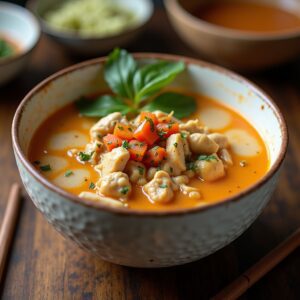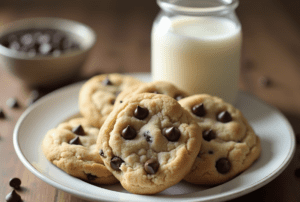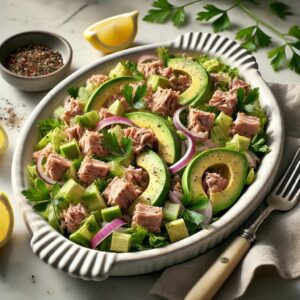

Diabetes Superfoods: The Best Foods to Balance Blood Sugar and Support Metabolic Health


Arya Soleil
Living with diabetes doesn’t mean giving up delicious food—it means choosing ingredients that help your body function at its best. Whether you’re managing type 2 diabetes, prediabetes, or just want to prevent blood sugar issues down the road, the foods you eat make a significant difference in your energy, weight, and long-term health. Enter diabetes superfoods: nutrient-dense, fiber-rich, anti-inflammatory foods that help balance blood sugar, improve insulin sensitivity, and nourish your body at the cellular level. In this guide, we’ll break down some of the best superfoods for diabetes management and why they work so well
Why Food Is Key to Managing Diabetes
Diabetes is a condition where the body struggles to use insulin effectively, leading to elevated blood sugar levels. Over time, uncontrolled blood sugar can damage blood vessels, nerves, kidneys, and eyesight. But here’s the empowering truth: many of the most effective tools for managing diabetes aren’t in your medicine cabinet—they’re in your kitchen. Whole, unprocessed foods that are high in fiber, low in sugar, and rich in anti-inflammatory compounds can help:
- Lower post-meal blood sugar spikes
- Improve insulin sensitivity
- Support healthy cholesterol levels
- Reduce inflammation
- Boost energy without glucose crashes
Let’s take a closer look at the top 10 superfoods for people with diabetes and how to incorporate them into your daily meals
Beans: Blood Sugar Stabilizers Packed with Fiber and Protein
Beans are one of the most underrated superfoods for diabetes. They’re rich in soluble fiber, which helps slow down digestion and reduce post-meal blood sugar spikes. They also contain plant-based protein, complex carbohydrates, magnesium, and resistant starch—helping you feel full and nourished without blood sugar crashes
Best types include black beans, lentils, chickpeas, and kidney beans
How to enjoy: Add beans to soups, salads, chili, or veggie burgers. Aim for 1/2 to 1 cup per day for maximum benefits
Dark Leafy Greens: Low-Carb, High-Nutrient Powerhouses
Spinach, kale, Swiss chard, arugula, and collards are packed with fiber, folate, magnesium, calcium, and antioxidants—with almost no effect on blood sugar. Magnesium in particular helps improve insulin sensitivity, while fiber keeps digestion slow and steady
These greens also reduce inflammation, support liver detox, and help alkalize the body
How to enjoy: Sauté in olive oil with garlic, add to smoothies, toss into salads, or mix into soups and omelets
Citrus Fruits: Vitamin C and Blood Sugar-Friendly Fiber
Oranges, grapefruits, lemons, and limes may be sweet, but they’re low-glycemic and rich in soluble fiber and vitamin C, both of which support healthy blood sugar levels and immune health
Grapefruit, in particular, has been studied for improving insulin sensitivity, though people on certain medications should check with their doctor
How to enjoy: Eat whole citrus fruits (not juice), add lemon to water, or sprinkle lime juice over tacos and salads
Berries: Antioxidants That Reduce Sugar Spikes
Berries—especially blueberries, strawberries, raspberries, and blackberries—are packed with polyphenols and fiber that help improve blood sugar regulation and reduce oxidative stress linked to diabetic complications
Despite being sweet, they have a low glycemic index and don’t cause rapid blood sugar rises
How to enjoy: Add fresh or frozen berries to smoothies, yogurt, oatmeal, or enjoy as a naturally sweet snack
Tomatoes: Lycopene-Rich and Low-Glycemic
Tomatoes are a staple in a diabetes-friendly diet. They’re full of lycopene, an antioxidant known to protect the heart and blood vessels—two areas commonly affected by high blood sugar. Tomatoes are also low in carbs and calories but high in flavor and vitamin C
How to enjoy: Enjoy cherry tomatoes raw, blend into tomato sauce, roast with herbs, or add to soups and omelets
Fatty Fish: Omega-3s That Fight Inflammation and Support Insulin Function
Fish high in omega-3 fatty acids—like salmon, mackerel, sardines, and trout—reduce inflammation and improve insulin sensitivity, cardiovascular health, and triglyceride levels. They’re also a great source of protein with zero carbohydrates, making them ideal for blood sugar control
How to enjoy: Bake, grill, or pan-sear fish with herbs and lemon. Try salmon over a salad or sardines on toast with avocado
Nuts: Healthy Fats That Support Satiety and Lower Blood Sugar
Nuts like almonds, walnuts, pecans, and pistachios are rich in healthy fats, fiber, magnesium, and antioxidants. They help slow the release of glucose, improve cholesterol, and reduce hunger between meals. They’re also linked to a lower risk of type 2 diabetes in research
How to enjoy: Eat a small handful as a snack, sprinkle over salads or yogurt, or blend into homemade nut butter. Stick to raw or dry-roasted varieties without added sugar or oils
Yogurt: Probiotic-Rich and Blood Sugar Friendly (If You Choose Wisely)
Yogurt, especially plain Greek yogurt, offers probiotics that support gut health and inflammation, as well as protein and calcium. Studies show that people who regularly consume fermented dairy have lower risks of developing type 2 diabetes
Just be careful to avoid flavored yogurts with added sugars
How to enjoy: Choose plain full-fat or low-fat Greek yogurt and top with nuts, cinnamon, and berries
Oats: Slow-Digesting Carbs That Help Regulate Glucose
Oats, especially steel-cut or rolled, are full of soluble fiber (beta-glucan) that helps improve insulin response and reduce cholesterol. They’re a more blood-sugar-friendly choice than refined grains and help you feel satisfied without spiking glucose
How to enjoy: Cook steel-cut oats with cinnamon and chia seeds, or make overnight oats with yogurt, berries, and flaxseed
Putting It All Together: A Sample Diabetes Superfood Meal Plan
Breakfast
Steel-cut oats with cinnamon, walnuts, and fresh blueberries
Green tea or black coffee
Snack
Plain Greek yogurt with raspberries and chia seeds
Lunch
Grilled salmon on a bed of spinach and kale, topped with cherry tomatoes and avocado
Side of lentil soup
Snack
A small handful of almonds and a clementine
Dinner
Chili made with black beans, ground turkey, bell peppers, and garlic
Side of roasted broccoli or sautéed greens
Hydration
Drink water throughout the day, and flavor it with cucumber, lemon, or mint to support hydration without sugar
Other Diabetes-Friendly Tips to Keep Blood Sugar in Check
- Prioritize fiber at every meal. Fiber slows glucose absorption and improves insulin sensitivity
- Include protein and healthy fat to reduce the glycemic load of meals
- Avoid added sugars—especially in beverages and sauces
- Stick to low-glycemic index (GI) foods, such as legumes, vegetables, berries, and whole grains
- Practice mindful eating and chew slowly to prevent overeating and blood sugar swings
- Exercise regularly, even a 20-minute walk after meals improves glucose uptake
Why These Foods Work So Well for Diabetes
These superfoods work in harmony to support your metabolic system. They reduce inflammation, feed beneficial gut bacteria, and improve insulin signaling, all of which are key to reversing insulin resistance and avoiding blood sugar spikes. Unlike fad diets or supplements, these foods offer long-term support rooted in real science and tradition
Can These Foods Help Reverse Type 2 Diabetes?
In many cases, yes. While each person’s health story is unique, research shows that diet and lifestyle changes can significantly reduce or even reverse type 2 diabetes, especially in its early stages. Incorporating these superfoods into a whole-food, low-sugar diet—paired with movement, stress management, and sleep—can dramatically improve insulin sensitivity, A1C levels, and energy
Foods to Limit or Avoid in a Diabetes-Friendly Diet
- Refined carbs (white bread, white rice, sugary cereals)
- Sugary drinks (sodas, sweetened coffees, juices)
- Trans fats (hydrogenated oils, processed baked goods)
- Highly processed snacks (chips, crackers, candy bars)
- Excess alcohol
Final Thoughts: You Have More Power Than You Think
Managing diabetes doesn’t have to mean deprivation. It means making smart, sustainable food choices that stabilize your blood sugar while still keeping meals flavorful and satisfying. Superfoods like beans, berries, leafy greens, and fatty fish aren’t just good for managing diabetes—they’re good for your heart, brain, immune system, and energy too
Start with one or two swaps a day—maybe adding beans to your salad or snacking on a handful of walnuts instead of chips. Over time, these small choices create big results. Your plate is powerful. Use it to your advantage
Recommended Reads

- April 19, 2025
Food is Medicine: How Nature’s Produce Can Heal Your Body From the Inside Out
Home News Healthy Habits & Lifestyle Health Conditions &...


- April 17, 2025
If You Want to Change Your Life, Then Change These Habits First: 8 Foundational Shifts That Transform Health, Energy, and Mindset
Home News Healthy Habits & Lifestyle Health Conditions &...


- April 17, 2025
100 Foods That Last 10 Years (or More): Long Shelf Life Staples for Smart Storage and Food Security
Home News Healthy Habits & Lifestyle Health Conditions &...


- April 17, 2025
Bridge Pose (Setu Bandhasana): A Powerful, Simple Move With Big Benefits
Home News Healthy Habits & Lifestyle Health Conditions &...


- April 17, 2025
Diabetes Superfoods: The Best Foods to Balance Blood Sugar and Support Metabolic Health
Home News Healthy Habits & Lifestyle Health Conditions &...


- April 17, 2025
Herbs for Stress Relief: Natural Remedies to Soothe Your Nervous System and Restore Calm
Home News Healthy Habits & Lifestyle Health Conditions &...

Diabetes Superfoods: The Best Foods to Balance Blood Sugar and Support Metabolic Health

Living with diabetes doesn’t mean giving up delicious food—it means choosing ingredients that help your body function at its best. Whether you’re managing type 2 diabetes, prediabetes, or just want to prevent blood sugar issues down the road, the foods you eat make a significant difference in your energy, weight, and long-term health. Enter diabetes superfoods: nutrient-dense, fiber-rich, anti-inflammatory foods that help balance blood sugar, improve insulin sensitivity, and nourish your body at the cellular level. In this guide, we’ll break down some of the best superfoods for diabetes management and why they work so well
Why Food Is Key to Managing Diabetes
Diabetes is a condition where the body struggles to use insulin effectively, leading to elevated blood sugar levels. Over time, uncontrolled blood sugar can damage blood vessels, nerves, kidneys, and eyesight. But here’s the empowering truth: many of the most effective tools for managing diabetes aren’t in your medicine cabinet—they’re in your kitchen. Whole, unprocessed foods that are high in fiber, low in sugar, and rich in anti-inflammatory compounds can help:
- Lower post-meal blood sugar spikes
- Improve insulin sensitivity
- Support healthy cholesterol levels
- Reduce inflammation
- Boost energy without glucose crashes
Let’s take a closer look at the top 10 superfoods for people with diabetes and how to incorporate them into your daily meals
Beans: Blood Sugar Stabilizers Packed with Fiber and Protein
Beans are one of the most underrated superfoods for diabetes. They’re rich in soluble fiber, which helps slow down digestion and reduce post-meal blood sugar spikes. They also contain plant-based protein, complex carbohydrates, magnesium, and resistant starch—helping you feel full and nourished without blood sugar crashes
Best types include black beans, lentils, chickpeas, and kidney beans
How to enjoy: Add beans to soups, salads, chili, or veggie burgers. Aim for 1/2 to 1 cup per day for maximum benefits
Dark Leafy Greens: Low-Carb, High-Nutrient Powerhouses
Spinach, kale, Swiss chard, arugula, and collards are packed with fiber, folate, magnesium, calcium, and antioxidants—with almost no effect on blood sugar. Magnesium in particular helps improve insulin sensitivity, while fiber keeps digestion slow and steady
These greens also reduce inflammation, support liver detox, and help alkalize the body
How to enjoy: Sauté in olive oil with garlic, add to smoothies, toss into salads, or mix into soups and omelets
Citrus Fruits: Vitamin C and Blood Sugar-Friendly Fiber
Oranges, grapefruits, lemons, and limes may be sweet, but they’re low-glycemic and rich in soluble fiber and vitamin C, both of which support healthy blood sugar levels and immune health
Grapefruit, in particular, has been studied for improving insulin sensitivity, though people on certain medications should check with their doctor
How to enjoy: Eat whole citrus fruits (not juice), add lemon to water, or sprinkle lime juice over tacos and salads
Berries: Antioxidants That Reduce Sugar Spikes
Berries—especially blueberries, strawberries, raspberries, and blackberries—are packed with polyphenols and fiber that help improve blood sugar regulation and reduce oxidative stress linked to diabetic complications
Despite being sweet, they have a low glycemic index and don’t cause rapid blood sugar rises
How to enjoy: Add fresh or frozen berries to smoothies, yogurt, oatmeal, or enjoy as a naturally sweet snack
Tomatoes: Lycopene-Rich and Low-Glycemic
Tomatoes are a staple in a diabetes-friendly diet. They’re full of lycopene, an antioxidant known to protect the heart and blood vessels—two areas commonly affected by high blood sugar. Tomatoes are also low in carbs and calories but high in flavor and vitamin C
How to enjoy: Enjoy cherry tomatoes raw, blend into tomato sauce, roast with herbs, or add to soups and omelets
Fatty Fish: Omega-3s That Fight Inflammation and Support Insulin Function
Fish high in omega-3 fatty acids—like salmon, mackerel, sardines, and trout—reduce inflammation and improve insulin sensitivity, cardiovascular health, and triglyceride levels. They’re also a great source of protein with zero carbohydrates, making them ideal for blood sugar control
How to enjoy: Bake, grill, or pan-sear fish with herbs and lemon. Try salmon over a salad or sardines on toast with avocado
Nuts: Healthy Fats That Support Satiety and Lower Blood Sugar
Nuts like almonds, walnuts, pecans, and pistachios are rich in healthy fats, fiber, magnesium, and antioxidants. They help slow the release of glucose, improve cholesterol, and reduce hunger between meals. They’re also linked to a lower risk of type 2 diabetes in research
How to enjoy: Eat a small handful as a snack, sprinkle over salads or yogurt, or blend into homemade nut butter. Stick to raw or dry-roasted varieties without added sugar or oils
Yogurt: Probiotic-Rich and Blood Sugar Friendly (If You Choose Wisely)
Yogurt, especially plain Greek yogurt, offers probiotics that support gut health and inflammation, as well as protein and calcium. Studies show that people who regularly consume fermented dairy have lower risks of developing type 2 diabetes
Just be careful to avoid flavored yogurts with added sugars
How to enjoy: Choose plain full-fat or low-fat Greek yogurt and top with nuts, cinnamon, and berries
Oats: Slow-Digesting Carbs That Help Regulate Glucose
Oats, especially steel-cut or rolled, are full of soluble fiber (beta-glucan) that helps improve insulin response and reduce cholesterol. They’re a more blood-sugar-friendly choice than refined grains and help you feel satisfied without spiking glucose
How to enjoy: Cook steel-cut oats with cinnamon and chia seeds, or make overnight oats with yogurt, berries, and flaxseed
Putting It All Together: A Sample Diabetes Superfood Meal Plan
Breakfast
Steel-cut oats with cinnamon, walnuts, and fresh blueberries
Green tea or black coffee
Snack
Plain Greek yogurt with raspberries and chia seeds
Lunch
Grilled salmon on a bed of spinach and kale, topped with cherry tomatoes and avocado
Side of lentil soup
Snack
A small handful of almonds and a clementine
Dinner
Chili made with black beans, ground turkey, bell peppers, and garlic
Side of roasted broccoli or sautéed greens
Hydration
Drink water throughout the day, and flavor it with cucumber, lemon, or mint to support hydration without sugar
Other Diabetes-Friendly Tips to Keep Blood Sugar in Check
- Prioritize fiber at every meal. Fiber slows glucose absorption and improves insulin sensitivity
- Include protein and healthy fat to reduce the glycemic load of meals
- Avoid added sugars—especially in beverages and sauces
- Stick to low-glycemic index (GI) foods, such as legumes, vegetables, berries, and whole grains
- Practice mindful eating and chew slowly to prevent overeating and blood sugar swings
- Exercise regularly, even a 20-minute walk after meals improves glucose uptake
Why These Foods Work So Well for Diabetes
These superfoods work in harmony to support your metabolic system. They reduce inflammation, feed beneficial gut bacteria, and improve insulin signaling, all of which are key to reversing insulin resistance and avoiding blood sugar spikes. Unlike fad diets or supplements, these foods offer long-term support rooted in real science and tradition
Can These Foods Help Reverse Type 2 Diabetes?
In many cases, yes. While each person’s health story is unique, research shows that diet and lifestyle changes can significantly reduce or even reverse type 2 diabetes, especially in its early stages. Incorporating these superfoods into a whole-food, low-sugar diet—paired with movement, stress management, and sleep—can dramatically improve insulin sensitivity, A1C levels, and energy
Foods to Limit or Avoid in a Diabetes-Friendly Diet
- Refined carbs (white bread, white rice, sugary cereals)
- Sugary drinks (sodas, sweetened coffees, juices)
- Trans fats (hydrogenated oils, processed baked goods)
- Highly processed snacks (chips, crackers, candy bars)
- Excess alcohol
Final Thoughts: You Have More Power Than You Think
Managing diabetes doesn’t have to mean deprivation. It means making smart, sustainable food choices that stabilize your blood sugar while still keeping meals flavorful and satisfying. Superfoods like beans, berries, leafy greens, and fatty fish aren’t just good for managing diabetes—they’re good for your heart, brain, immune system, and energy too
Start with one or two swaps a day—maybe adding beans to your salad or snacking on a handful of walnuts instead of chips. Over time, these small choices create big results. Your plate is powerful. Use it to your advantage
Recommended Reads

- April 19, 2025
Food is Medicine: How Nature’s Produce Can Heal Your Body From the Inside Out
Home News Healthy Habits & Lifestyle Health Conditions &...


- April 17, 2025
If You Want to Change Your Life, Then Change These Habits First: 8 Foundational Shifts That Transform Health, Energy, and Mindset
Home News Healthy Habits & Lifestyle Health Conditions &...


- April 17, 2025
100 Foods That Last 10 Years (or More): Long Shelf Life Staples for Smart Storage and Food Security
Home News Healthy Habits & Lifestyle Health Conditions &...


- April 17, 2025
Bridge Pose (Setu Bandhasana): A Powerful, Simple Move With Big Benefits
Home News Healthy Habits & Lifestyle Health Conditions &...


- April 17, 2025
Diabetes Superfoods: The Best Foods to Balance Blood Sugar and Support Metabolic Health
Home News Healthy Habits & Lifestyle Health Conditions &...


- April 17, 2025
Herbs for Stress Relief: Natural Remedies to Soothe Your Nervous System and Restore Calm
Home News Healthy Habits & Lifestyle Health Conditions &...



